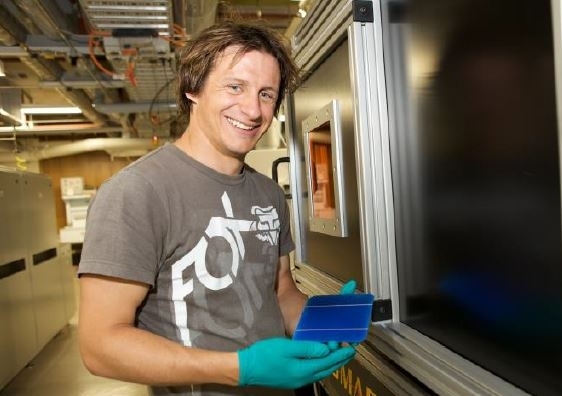Brett Hallam was one of three UNSW researchers to receive an award from Premier Gladys Berejiklian earlier this week. Hallam was recognized for his work in PV technology, and given the Award for Energy Innovation in New South Wales.
The New South Wales Premier Prizes are awarded annually to “reward leading researchers for cutting-edge work that has generated economic, environmental, health, social or technological benefits for New South Wales,” according the NSW Government.
Hallam received the award for his work in boosting the output of solar panels, which UNSW says will lead to cheaper energy generated from PV.
Hallam’s research is focused on techniques for manipulating the charge state of atomic hydrogen in silicon to neutralize performance-limiting defects in solar cells. He has worked closely with the solar industry for years, and achieved several solar efficiency records.
Two other UNSW researchers received awards for their work in oceanography and cancer research. The prestigious award for NSW Scientist of the Year, and the $60,000 prize that comes with it, went to Professor Gordon Wallace of the University of Wollongong for his work in robotics.
“A strong and dynamic research and development system is critical to driving innovation in the state’s economy,” said Premier Gladys Berejiklian. “This year’s prizes again demonstrate NSW has some of the world’s best and brightest scientists and technologists across a diverse range of disciplines right here in our own backyard.”
UNSW has long been at the center of solar research, and was home to the lab where the modern PV cell was developed decades ago.
This content is protected by copyright and may not be reused. If you want to cooperate with us and would like to reuse some of our content, please contact: editors@pv-magazine.com.









By submitting this form you agree to pv magazine using your data for the purposes of publishing your comment.
Your personal data will only be disclosed or otherwise transmitted to third parties for the purposes of spam filtering or if this is necessary for technical maintenance of the website. Any other transfer to third parties will not take place unless this is justified on the basis of applicable data protection regulations or if pv magazine is legally obliged to do so.
You may revoke this consent at any time with effect for the future, in which case your personal data will be deleted immediately. Otherwise, your data will be deleted if pv magazine has processed your request or the purpose of data storage is fulfilled.
Further information on data privacy can be found in our Data Protection Policy.